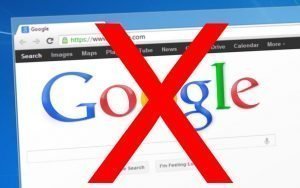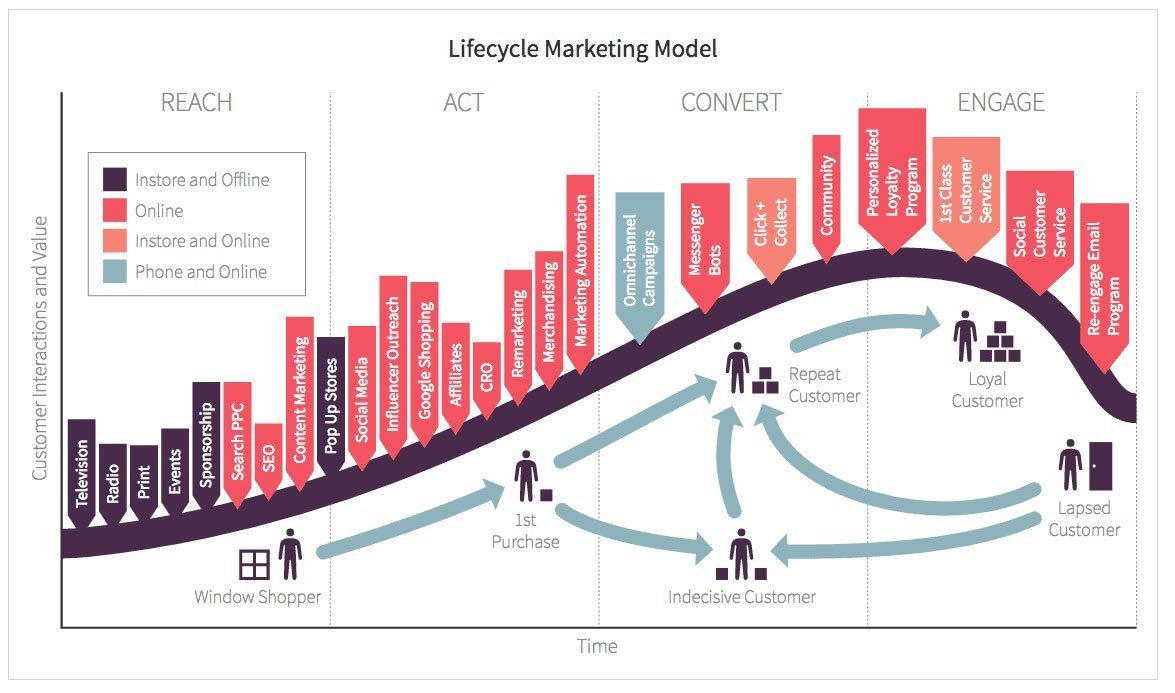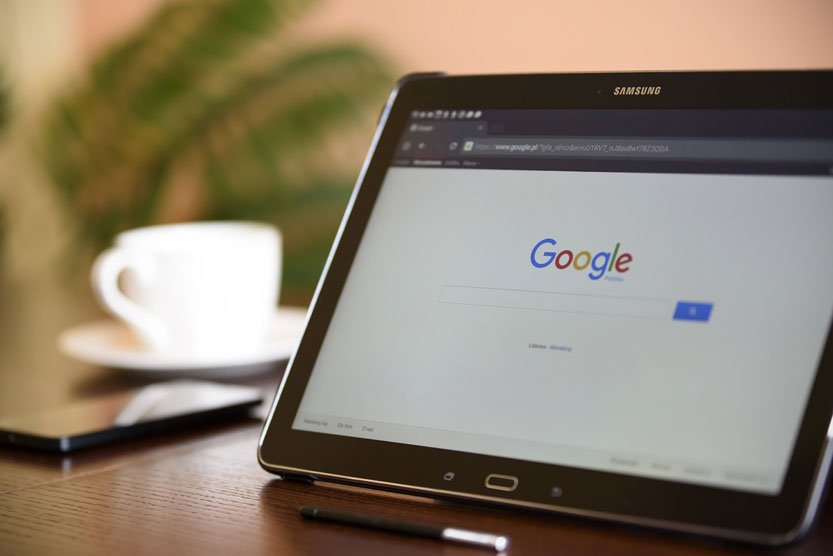
38 Ways to Get Traffic Without Google
Reduce your reliance on Google, diversify your website traffic sources, and open up new marketing channels with these 38 methods.

Its perhaps easiest to understand the customer lifecycle by thinking through a large purchase decision that most people make – buying a new car.
Traditional marketing typically recognizes 4 stages in the customer’s journey (typically known by the acronym AIDA):
These are the mental steps someone goes through before finally purchasing. A customer can move through the stages very quickly or very slowly or some combination of both.
Think about the last time you bought a new or used car. Now think in terms of the 4 stages:
The four steps above have been used in graphical terms to describe what is called the “sales funnel.” It looks something like this:

It’s called a funnel because of its shape and purpose. At the top of the funnel in the “Awareness” stage, there are more people. The number of people that are aware of the various cars on the market is very large.
As you move down the funnel, the number of people in that stage decreases. There are a lot fewer people interested in buying a car than there are people aware of the cars in the market. Even less are the people who are actively making a decision to buy a car. And fewer yet are actually buying cars on a daily basis.
The customer lifecycle model is very similar to the sales funnel and AIDA framework with a few exceptions:
Here is how Smart Insights, a digital marketing firm, graphically demonstrates the lifecycle marketing model with their terminology:

(Image courtesy of Smart Insights)
Let’s look at each of these new insights offered by the lifecycle model for a moment and how they might affect your own marketing.
The traditional sales funnel does not address what a customer does after purchase. Optimally, a website owner wants them to do two things:
Every business wants that valuable (and free!) word of mouth advertising. If you can get a highly satisfied customer to advocate for your business and what you are selling, that is a huge win. Such advertising costs nothing and since the customer isn’t employed by you, they are viewed as a financially unbiased source of information by whoever is listening to them.
Additionally, why would a business be happy with one sale when they can get multiple sales from the same customer? Marketing books have taught for decades that a new customer is much more expensive to acquire than an existing customer. Any business is smart to focus on selling more to their existing customer base by earning long term loyalty.
Now its time to start thinking about how you can take advantage of the customer lifecycle model for your own web site. Let’s start from the perspective of the customer and then include how you as a seller can engage them at each stage of the lifecycle. I have adapted these labels from Smart Insight’s RACE Planning system and traditional sales funnel language. I have also broken out advocacy and loyalty into their own stages since they are two different types of behavior.
Please note that you won’t know exactly which stage of the lifecycle your website visitors are in when they come to your site unless you are tracking them via your email marketing, advertising on other channels, through affiliate programs, and so on. Even then, you won’t know unless they actually tell you via survey, chat, or other system you have set up (which makes having those systems in place even more strategic).

Website visitors in the exploration and discovery stage are not actively looking to purchase your products or services. They probably don’t know much about who you are or what you have to offer.
Questions visitors may ask of your website during the exploration and discovery stage:
Often these questions are completely overlooked by website owners like you and me. We know our businesses so well, we forget what it is like to not have the knowledge we do.
What visitors may do on your site during this stage:
How you can serve visitors in this stage:
Action Steps:
Since you are working on your site constantly, and know your business inside and out, it is often hard to put yourself in the mindset of someone in this first stage.
To know what it feels like, do a search in an industry you know nothing about. Visit a couple websites. What questions are running through your head? What do you look at first when you visit a new site? How well are those sites serving you as someone completely new? Now go back to your own site – how well are you serving visitors in the exploration and discovery stage?
Visitors in this stage are now more familiar with who you are and what you have to offer. They are now considering whether you are the best choice to solve their problem and if they can trust you with their money.
Questions visitors may ask of your website during the decision making stage:
What visitors may do on your site during this stage:
What visitors may do on other sites during this stage:
How you can serve visitors in this stage:
Action Steps:
Its easy to become blind to what you might be missing. There are plenty of action steps I could suggest here but one that is very helpful is to hire a user testing company. What these companies do is use real people to navigate your website and then record their experience based on a task you give them. You can then watch the recorded videos and see what information and tasks these sample visitors can see and do and what they are struggling with. Here is one company I have used for this many years ago. They were one of the first to offer this service. Again, I haven’t used them for years to know about their current pricing or quality but I still see them recommended now and then.
If you don’t want to pay a company’s high prices for user testing, I am sure it wouldn’t be hard to set up your own testing by hiring freelancers at sites like Upwork and Fiverr.

Now your website visitors are convinced you are the right company to meet their needs and they have decided to purchase from you.
What’s important about this stage is that a customer is actually able to complete the buying process. With the number of people that actually abandon their shopping carts without finishing a transaction, this step is more important than many site owners realize.
Questions customers may ask of your website during the purchasing stage:
What customers may do on your site during this stage:
How you can serve visitors in this stage:
Action Steps:
Make sure you have analytics that can track the purchasing process. What percentage of visitors abandon their shopping carts? Do you know why they don’t complete their purchase?
This stage is one that is often overlooked but is a great opportunity to get free word of mouth advertising.
Stages 4 & 5 can often be switched. For the sake of this article, we will assume a customer is ready to share after the first purchase and deciding whether or not to do so.
Questions customers may ask during this stage:
What customers may do during this stage:
How you can serve visitors in this stage:
Action Steps:
Think about what processes you have in place to encourage your customers to share their experience with others. If you have done a good job serving them, tell them how much you would like to serve their friends and family also.
Repeat business is far more strategic than focusing the majority of your attention on one-time customers. Always try to increase the long term value of your customers by selling to them again and again.
When your customers begin the process of buying something different, they may go back to stage 1 or stage 2 at this point. You have an advantage because the customer has already trusted you with one purchase. If you’ve done a good job, you have already overcome several barriers that will need to be addressed by a company that is unknown to the customer.
Questions customers may ask during this stage:
What customers may do during this stage:
How you can serve visitors in this stage:
Action steps:
Think through any processes you have to encourage repeat business. If you don’t have any, think through companies you are loyal to. Why do you keep going back to them? What companies did you buy once from and never return and why?
Developing a strategy to retain customers and build long term loyalty is a strategic move that many solo entrepreneurs overlook. Too often, gaining new customers takes a much higher priority than retaining existing customers. With how easy technology makes it to follow up these days, there is no reason not to have follow up processes in place.
I hope that learning about the stages of the customer lifecycle helps you think more strategically about how you can serve your website visitors regardless of what stage they are in. It is so easy to think of your website visitors as just another analytics number instead of real people with varying needs at differing points in their purchasing journey.
If you change your thinking and start addressing customer needs at various points of the cycle with your website, you’ll be far ahead of many of your competitors and you will see your conversion rate increase.
Helpful Resource – Use An Email Marketing Automation Service to Constantly Keep in Touch With Your Customers

Jim started earning a living online in 1999 and became a solo entrepreneur in 2001. He started Solo Intel in 2019 as a way to help solo entrepreneurs and small operators become more strategic with their online business.

Reduce your reliance on Google, diversify your website traffic sources, and open up new marketing channels with these 38 methods.

You can absolutely learn what makes your website valuable and take steps now to become more profitable in the short run and increase the amount you can get when you are ready to sell.

Neil Patel says to follow this method to get 1,000 visitors to a new website without spending any money. But will it work?

What is the most strategic way to develop an online course with the most chance of succeeding? We suggest a market-driven approach.